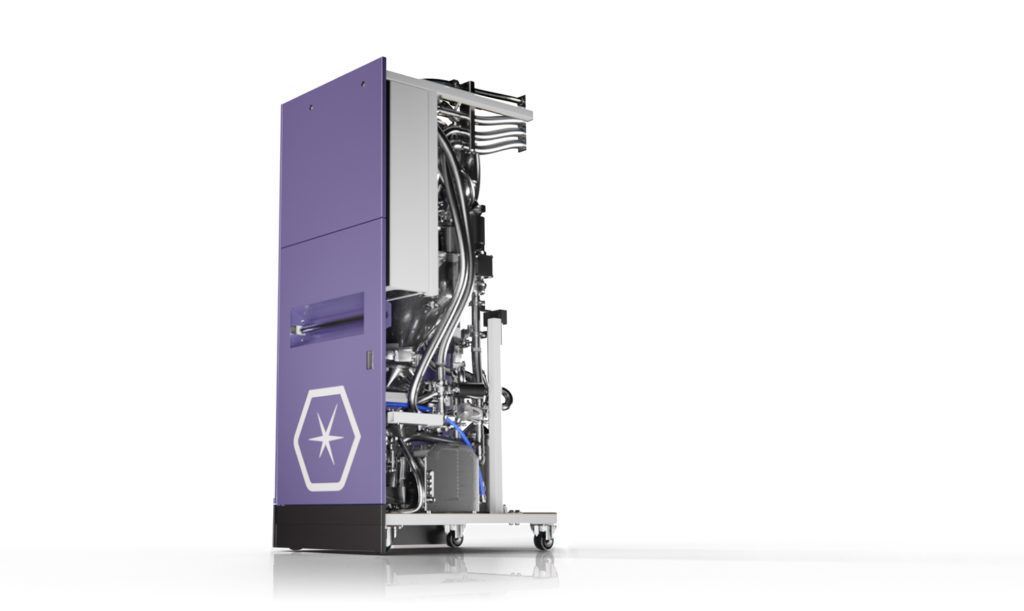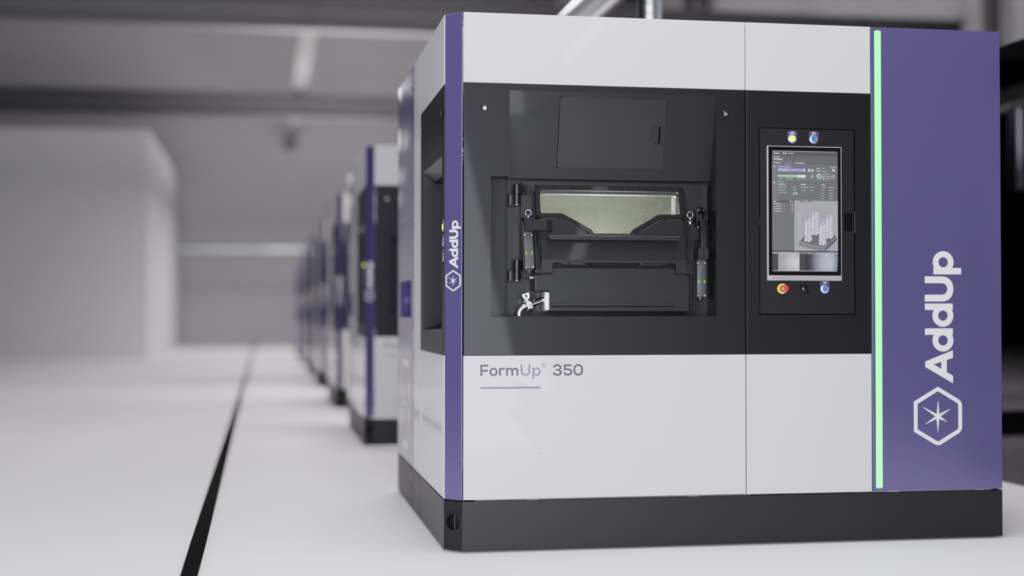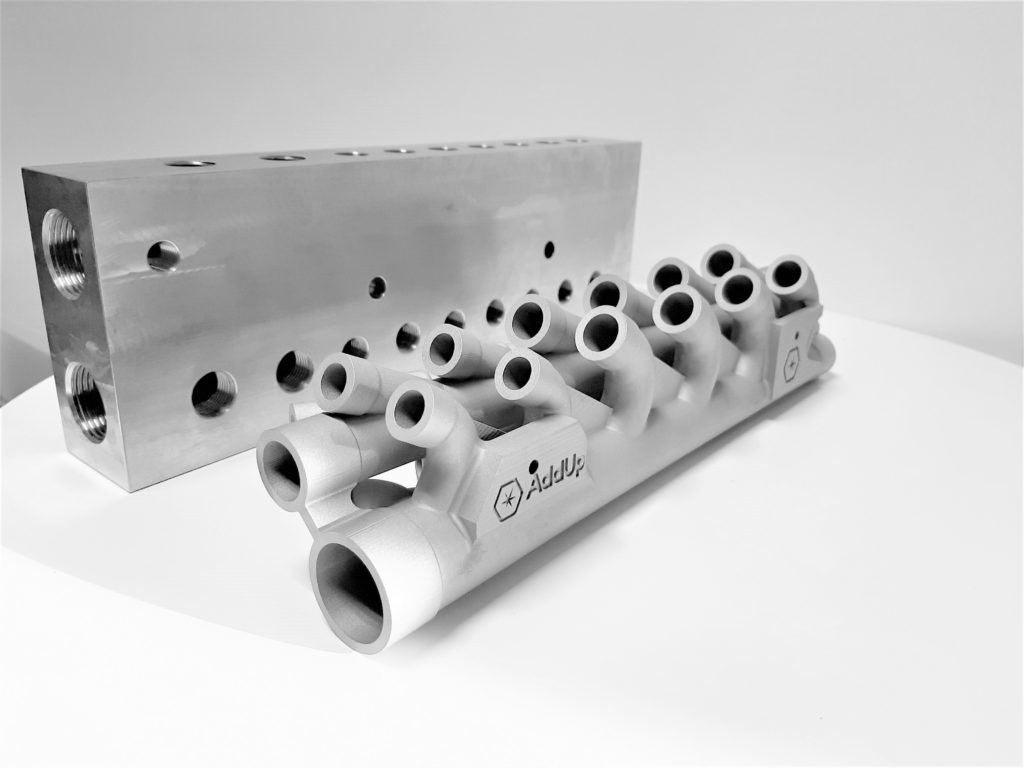AddUp, a joint company owned by Michelin and Fives, has just launched the FormUp 350 metal laser powder bed fusion (L-PBF) machine. A variety of companies attempt to improve their metal L-PBF systems by featuring ever-greater numbers of lasers. Rather than throw lasers at the problem, AddUp has made a modular, production-ready machine.

Building on their previous partnership, AddUp worked with material handling giant AZO to make a powder module designed for storing, moving, recovering and sieving powder. This all occurs automatically within an inert atmosphere, preventing operators from being exposed to fumes and smelting residues. This includes an “automatic passivation filter system that ensures safe waste disposal.” The firm disclosed that it has over 40 machines installed at its own site right now, with which it is running its NCore software to run production files of over 80 GB in a single run. The use of AddUp Dashboards allows for tracing and analyzing production data, including 80 different production parameters and automatic editing of “production conformity reports.”

In-process monitoring is made up of a system that continuously measures laser power and fusion temperature. Real-time analysis of powder spreading looks for defects on the surface of the powder bed “in less than a second”. If any defects are caught, the powder is recoated once more. Additionally, the FormUp 350 offers the ability to swap out the powder coating device for a scraper or roller, depending on the needs of the customer. The recoaters can also bidirectionally recoat and the company says that recoating is 40% faster because of this.

The company boasts of reduced inerting times, a quicker cool down time of “2 hours to cool down from 200 to 65°C”, better monitoring, and quad-500 W Ytterbium continuous fiber lasers with a laser spot size of 70 µm. Each of the four layers can cover the entire build platform. The company’s real-time in layer monitoring helps visualize problems as they occur. OPC-UA and MQTT gateways, meanwhile, mean that you can easily connect the printer to other monitoring devices.
AddUp is not often found in metal 3D printing lineups. The company is not bombastic and has not announced a dozen-laser system with much aplomb. It seems that it has worked on improving a real production device. By focusing on changeover and reducing the time of parts in the machine, it has improved the economics of using its equipment. Better monitoring, better control, and a focus on letting users play with all 160 parameters of their 3D printers makes their systems more open and usable. There are also four different configurations: Starter, Efficiency, Productivity and Advanced.
With 40 of its own machines doing production, AddUp can learn from the actual shop floor. Real experience and reams of data shape the future development of its equipment. The company is not trying to leap a lightyear ahead, but instead make steady progress with a new and more mature generation of 3D printers.
One claim the company made stands out to me: “one hour or less” between production runs. Some other printers may have changeover times of up to eight hours. By focusing on making a better production machine, AddUp will make fewer headlines. A lot of what they’ve done, however, is exactly what production people want. Increasing uptime, monitoring, and optimizing machine utilization are exactly what businesses making millions of parts want to have.
AddUp’s equipment deserves wider consideration. By focusing on making the 350 easier to live with, increasing yield, and improving the economics, they’ve made something that will be a better printer for many who need one. For this reason alone, it should tempt people to look beyond their existing suppliers and perhaps consider AddUp.
Subscribe to Our Email Newsletter
Stay up-to-date on all the latest news from the 3D printing industry and receive information and offers from third party vendors.
Print Services
Upload your 3D Models and get them printed quickly and efficiently.
You May Also Like
Reinventing Reindustrialization: Why NAVWAR Project Manager Spencer Koroly Invented a Made-in-America 3D Printer
It has become virtually impossible to regularly follow additive manufacturing (AM) industry news and not stumble across the term “defense industrial base” (DIB), a concept encompassing all the many diverse...
Inside The Barnes Global Advisors’ Vision for a Stronger AM Ecosystem
As additive manufacturing (AM) continues to revolutionize the industrial landscape, Pittsburgh-based consultancy The Barnes Global Advisors (TBGA) is helping shape what that future looks like. As the largest independent AM...
Ruggedized: How USMC Innovation Officer Matt Pine Navigates 3D Printing in the Military
Disclaimer: Matt Pine’s views are not the views of the Department of Defense nor the U.S. Marine Corps Throughout this decade thus far, the military’s adoption of additive manufacturing (AM)...
U.S. Congress Calls Out 3D Printing in Proposal for Commercial Reserve Manufacturing Network
Last week, the U.S. House of Representatives’ Appropriations Committee moved the FY 2026 defense bill forward to the House floor. Included in the legislation is a $131 million proposal for...

































